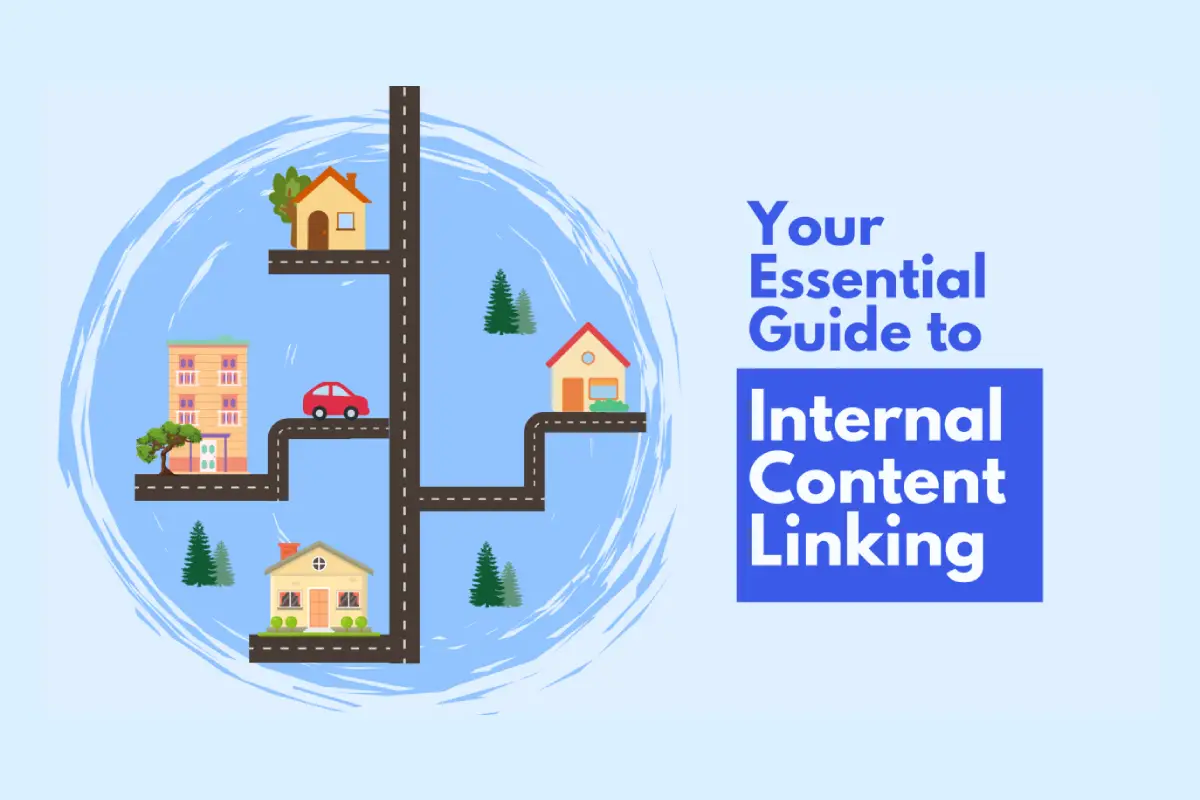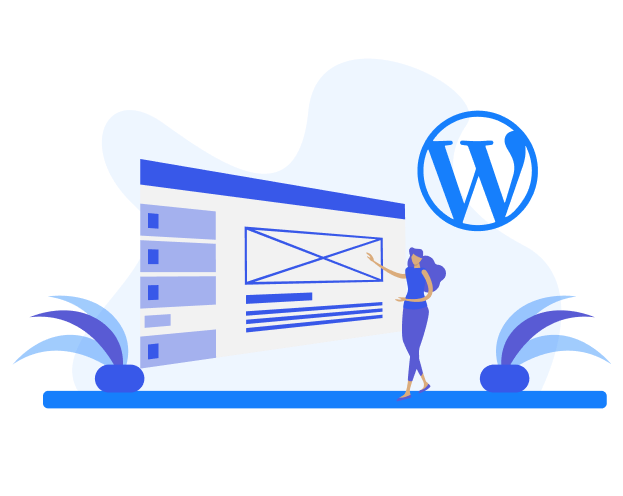Everyone talks about backlinks when it comes to SEO. They are important, yes, but there is another tool that is often underestimated: internal linking.
Internal linking is not just about sending people from one page to another. It is about guiding both users and search engines through your website in a way that builds authority, improves rankings, and increases conversions. The best part? Unlike backlinks that require outreach, internal links are completely in your control.
Let’s explore why internal linking matters, how it helps SEO, and how you can create a strategy that works.
Internal Links Help Google Understand Your Website
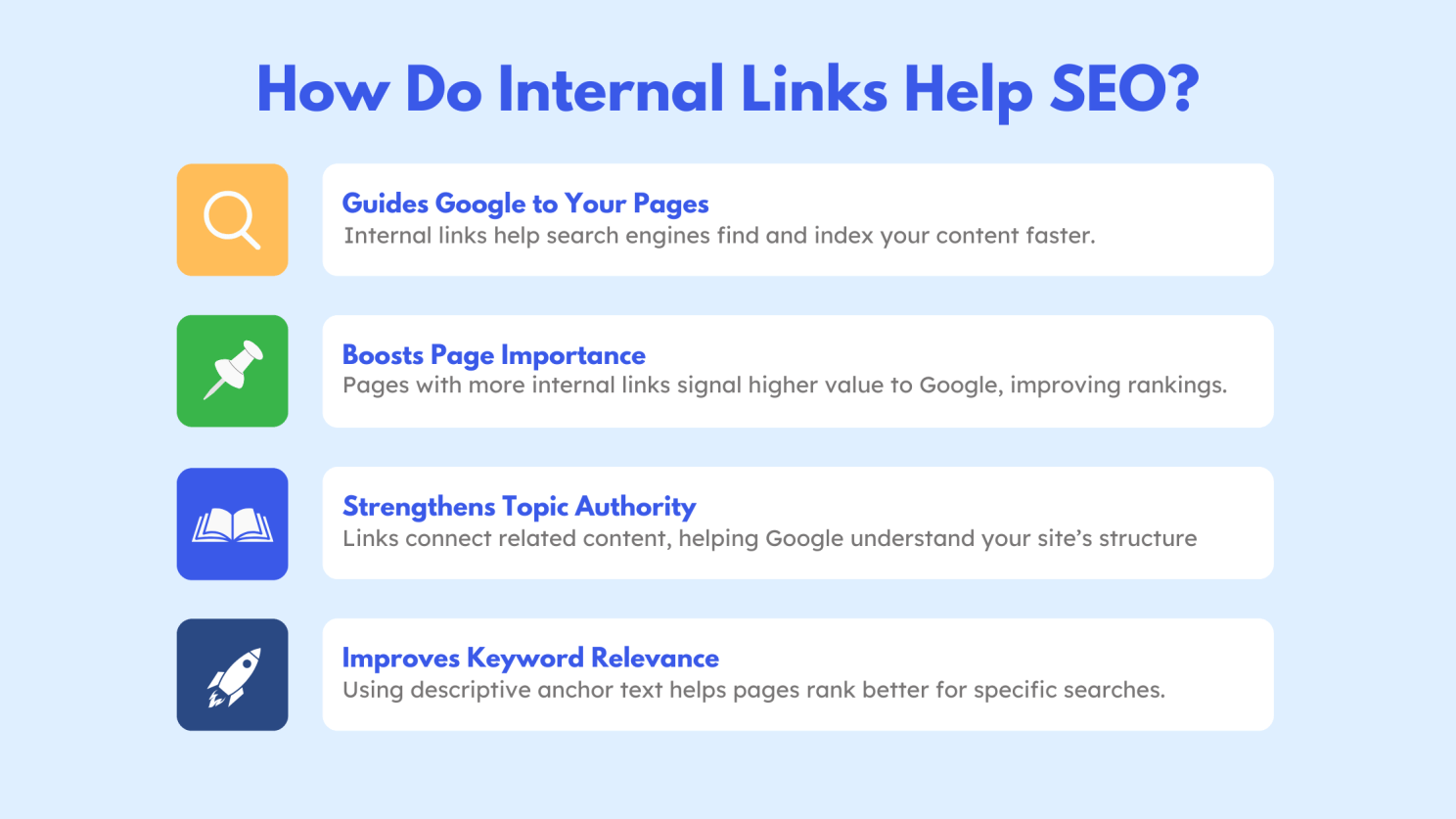
Think of internal links as signposts. Search engines like Google use these links to discover new pages, understand the structure of your site, and decide which content is most important.
If multiple pages point to the same article, Google sees that page as more valuable. Over time, this improves its chances of ranking higher.
Example
Imagine you write a blog post on “Best WooCommerce SEO Tips.” If other articles on your site link to it using anchor text like “WooCommerce SEO,” Google begins to associate your page with that keyword. This boosts your chances of showing up for related searches.
How to do it right
- Link only to relevant pages.
- Use descriptive anchor text instead of “click here” or “read more.”
- Keep links natural and helpful, not forced.
Internal Links Keep Visitors Engaged Longer
Google pays attention to how long people stay on your website. If they land on one page and leave immediately, it signals that your content may not be useful.
Internal links encourage visitors to keep reading by guiding them to related content. Instead of leaving after one article, they click through to another, which increases dwell time and lowers bounce rates.
Example
If someone reads your post on “Best WordPress Security Plugins,” an internal link to “Why WordPress Sites Get Hacked Most Often” gives them a reason to keep exploring.
How to do it right
- Link to content that naturally fits with the topic.
- Place links within the content, not just in sidebars or footers.
- Suggest the next step in the reader’s journey with helpful links.
Internal Links Pass Authority Across Pages
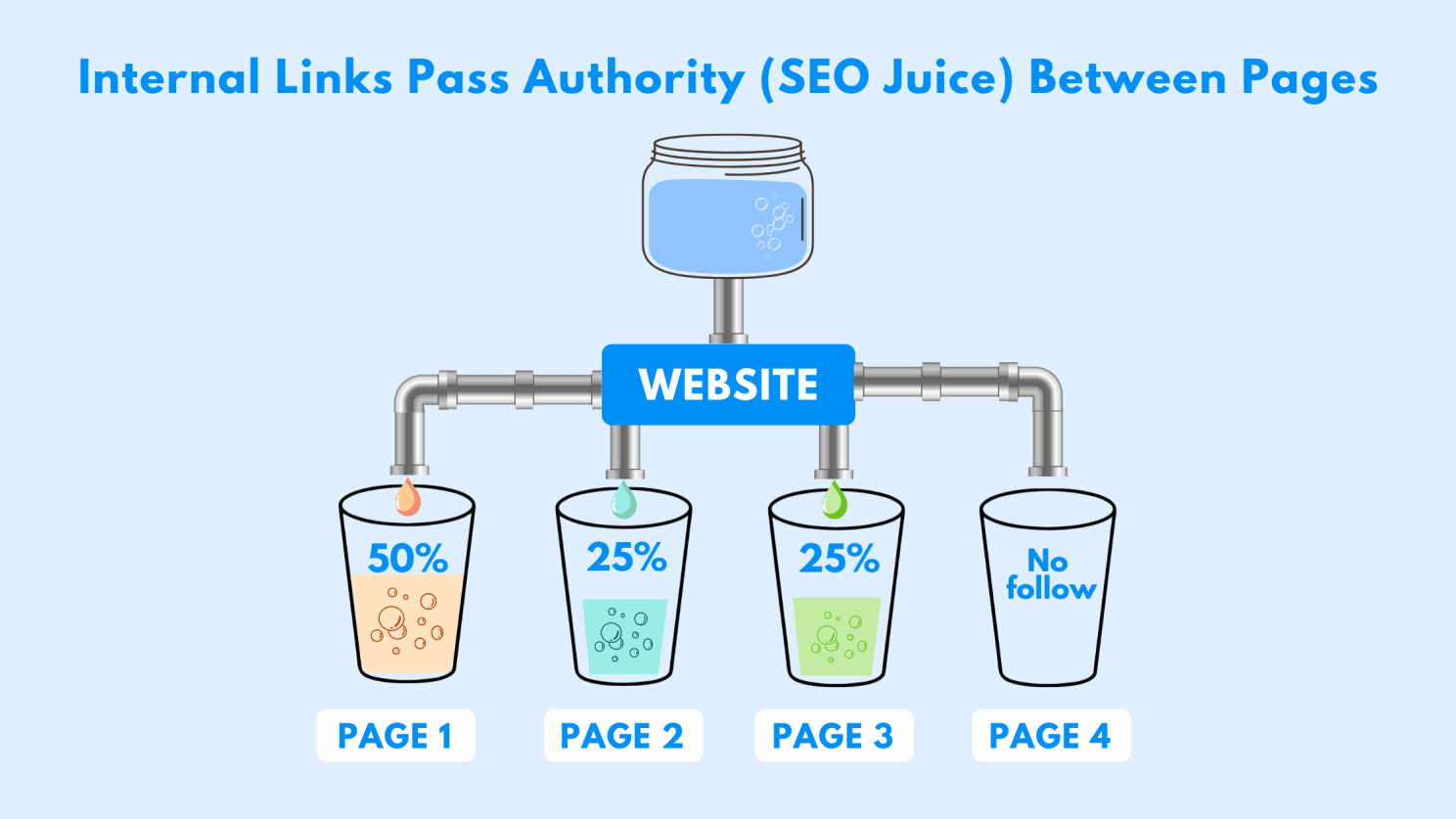
When one page on your website earns backlinks, it gains authority. But if you do not link it to other key pages, that authority stays trapped. Internal links spread that SEO power across your site.
Example
If your homepage has the most backlinks, you can pass some of that authority to your top blog posts or service pages by linking to them. This strengthens their ability to rank.
How to do it right
- Find your high-authority pages using tools like Google Search Console or Ahrefs.
- Link from those strong pages to content you want to rank higher.
- Avoid wasting links on low-value pages like privacy policies.
Internal Links Help You Rank for More Keywords
Search engines connect topics across your site based on your internal links. By linking strategically, you can strengthen your authority on specific subjects and rank for a wider range of keywords.
Example
If you are targeting the keyword “best SEO plugins,” you can link to it from articles like “How to Speed Up WordPress” or “Common SEO Mistakes.” This signals to Google that your site is an authority on SEO plugins.
How to do it right
- Identify secondary keywords related to your main topics.
- Link between articles that cover these topics.
- Regularly update older posts with new internal links to keep them relevant.
Internal Links Prevent Orphan Pages
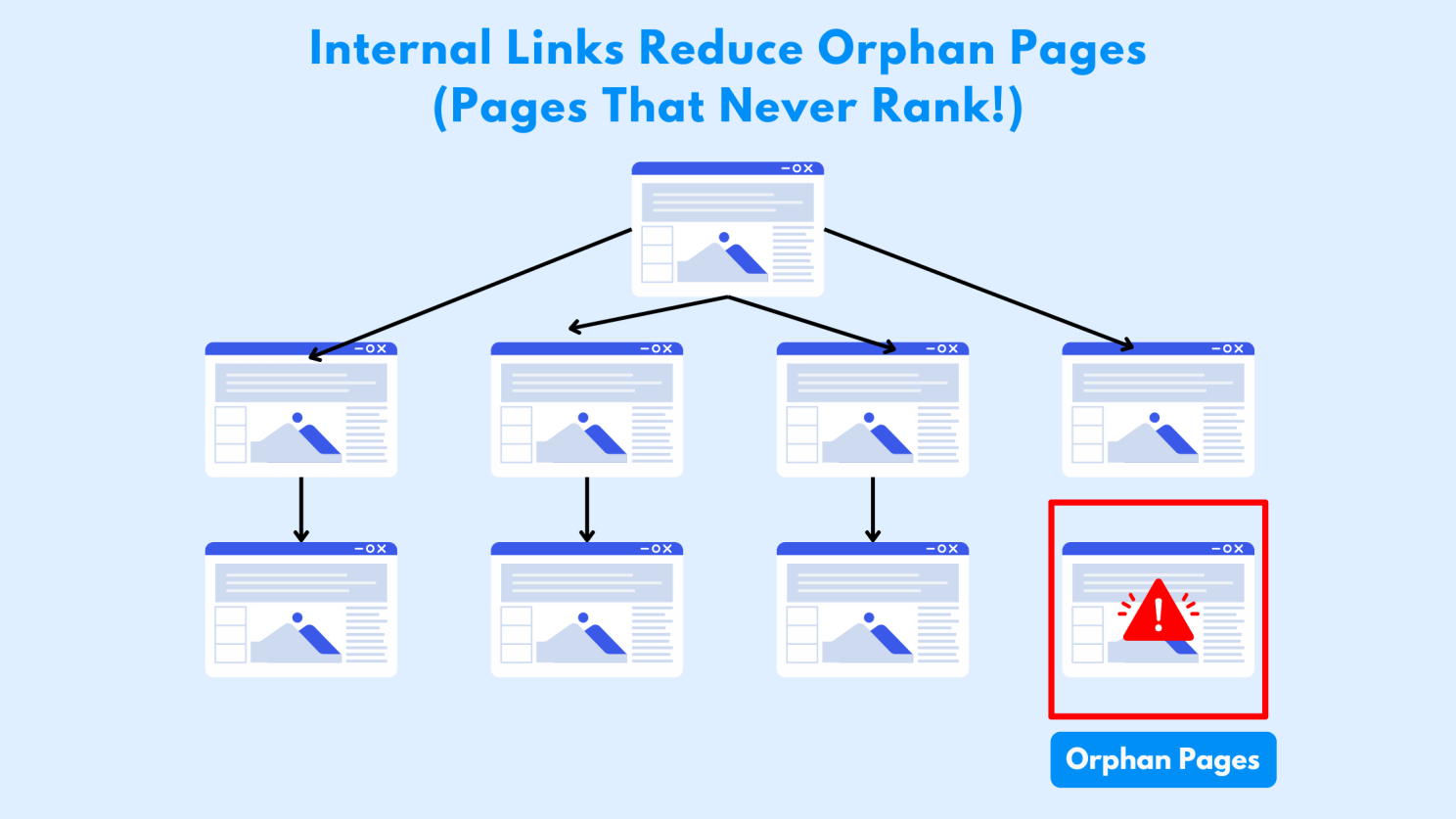
An orphan page is a page on your site that has no internal links pointing to it. These pages are often invisible to Google because the crawler cannot find them. As a result, they rarely rank well.
Example
If you publish a new WordPress tutorial but do not link to it from any other page, it may never get indexed, no matter how well optimized it is.
How to fix it
- Use tools like Screaming Frog or Ahrefs to identify orphan pages.
- Always link new pages from older, high-traffic posts.
- Add new content to your menus, categories, or related articles section.
Internal Links Help Google Crawl Your Site Faster
Search engines crawl millions of pages every day. They prioritize websites that are well-structured and easy to navigate. Internal linking makes it easier for crawlers to discover and index new content quickly.
Example
If you publish a new blog but never link to it from other pages, it could take weeks before Google notices it. But if you link to it from your homepage or another popular article, it will get indexed much faster.
How to speed things up
- Link to new articles from your highest-traffic pages.
- Use a recent posts section on your blog.
- Submit your sitemap to Google Search Console.
How to Build a Strong Internal Linking Strategy
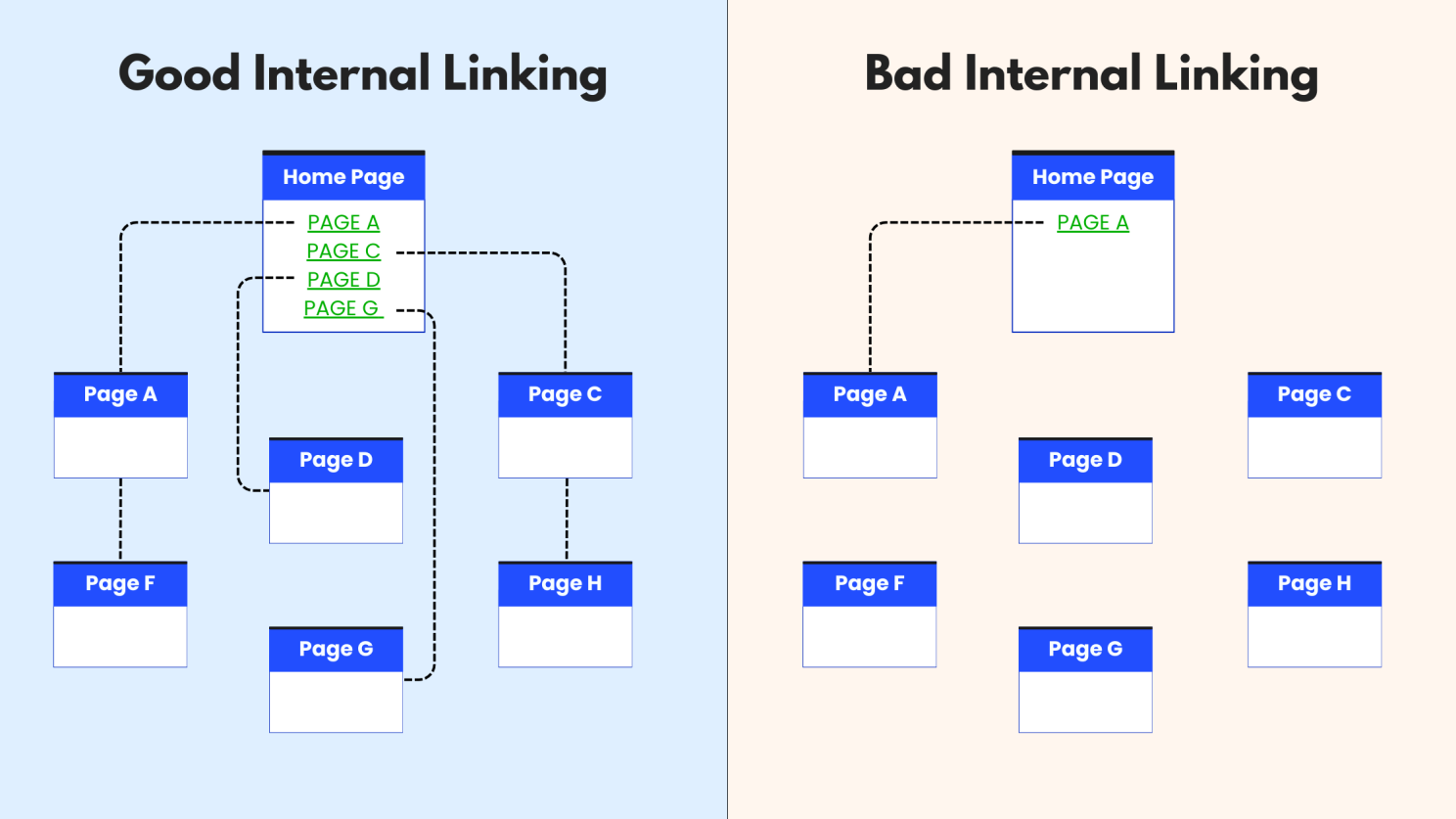
Here is a simple five-step process to improve your internal linking structure:
- Identify your pillar content. These are your cornerstone guides, service pages, or detailed tutorials.
- Link supporting content to pillar pages. Each time you publish a new post, connect it back to your main resources.
- Fix orphan pages. Audit your site regularly to ensure every page has internal links pointing to it.
- Keep linking naturally. Do not overload a page with too many links. Five to ten is often enough unless the content is very long.
- Update older posts. Each time you create new content, go back and add internal links from existing articles.
Final Thoughts: Stop Ignoring Internal Linking
Most website owners focus only on backlinks, but internal links can be just as powerful. The difference is that you control every aspect of them.
A strong internal linking strategy improves crawling, strengthens authority, helps pages rank faster, and keeps visitors on your site longer. It is one of the most cost-effective SEO tactics you can implement today.
Pro Tip: The next time you publish a blog post, do not just hit publish and walk away. Go back to your older articles and add links to your new post. Over time, this simple habit will boost your rankings and keep your site healthy.
At LaunchWithWP, we help WordPress site owners build smart SEO strategies that work. Internal linking is one of the easiest wins, but it is often ignored. Done right, it can transform your content into a connected system that search engines trust and users love.

